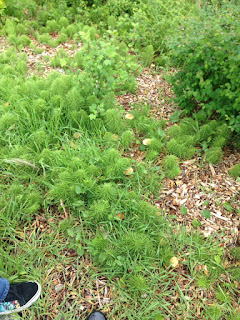Service learning
For my service hours, I did E-mammal identification. I went on Tuesday, June 6th for 3 hours. Someone who can verify I was there would be Cali Drake (cali.drake@edmail.edcc.edu).
The goal of E-mammal identification is to involve citizens in science. Basically, all you do is look at pictures and identify what animals you see in them. This experience was really good because it tied in well to one of my other classes (Bio Anthro) It is a really easy way to do citizen science. It also really helps that it is pretty easy to do and not very intimidating. It's a good way for people to connect with the environment they live in without having to know a lot. It is also an easy way for people to see what animals they live near to, and to be more aware of what kind of waste they are leaving. This can directly correlate with people and their impact on the sound. If they knew more about the ecosystems they were affecting, then it would be easier for them to remember to be careful with their waste. Many people don't realize how much nature there is in urban areas. Two of the important sites for e-mammal are Japanese and Big Gulch, located in a popular area in Mukilteo. I think that all types of Biology are interdisciplinary. Taking Marine Biology and Bio Anthropology at the same time has really proven this to me. With a background in Ecology, I have really been able to connect the concepts of these two classes to understand them both better. Any Biological knowledge gained will be useful in any aspect of Biology.
(An example of what you would see during e-mammal, and the animal's identification on the upper right. This is from the LEAF school website.)
Questions that I had
1. How could we make this program even more accessible?
2. How could I get involved with actually setting up the cameras?
3. Would people be willing to learn how to do it to participate in science?
4. Could I try to interpret into a Biology class when I'm teaching high school?
for more info: https://emammal.si.edu/leaf-school-0
The goal of E-mammal identification is to involve citizens in science. Basically, all you do is look at pictures and identify what animals you see in them. This experience was really good because it tied in well to one of my other classes (Bio Anthro) It is a really easy way to do citizen science. It also really helps that it is pretty easy to do and not very intimidating. It's a good way for people to connect with the environment they live in without having to know a lot. It is also an easy way for people to see what animals they live near to, and to be more aware of what kind of waste they are leaving. This can directly correlate with people and their impact on the sound. If they knew more about the ecosystems they were affecting, then it would be easier for them to remember to be careful with their waste. Many people don't realize how much nature there is in urban areas. Two of the important sites for e-mammal are Japanese and Big Gulch, located in a popular area in Mukilteo. I think that all types of Biology are interdisciplinary. Taking Marine Biology and Bio Anthropology at the same time has really proven this to me. With a background in Ecology, I have really been able to connect the concepts of these two classes to understand them both better. Any Biological knowledge gained will be useful in any aspect of Biology.
(An example of what you would see during e-mammal, and the animal's identification on the upper right. This is from the LEAF school website.)
Questions that I had
1. How could we make this program even more accessible?
2. How could I get involved with actually setting up the cameras?
3. Would people be willing to learn how to do it to participate in science?
4. Could I try to interpret into a Biology class when I'm teaching high school?
for more info: https://emammal.si.edu/leaf-school-0



That is a cool service learning project, that sounds like a fun way to get involved in science in the community.
ReplyDeleteI love Cali! We presented our findings at the anthropological conference I attended like the second week of class. In fact her presentation covered alot of this and tied into her native heritage. Anyways, its awesome that you were able to work with her on this and thats she's leading newer opportunities like these for other students.
ReplyDelete